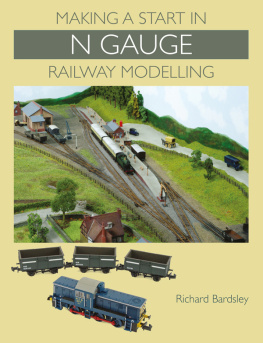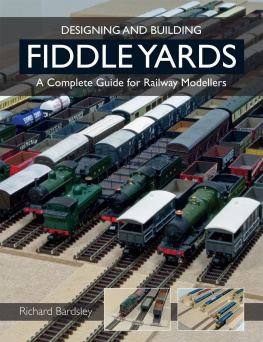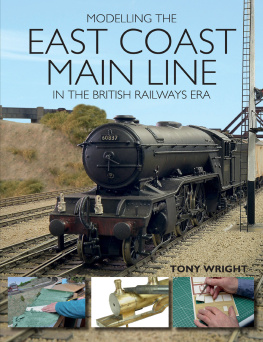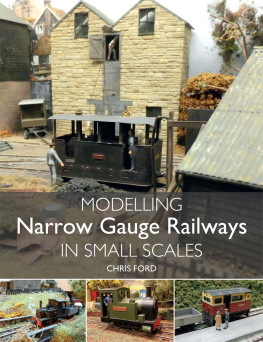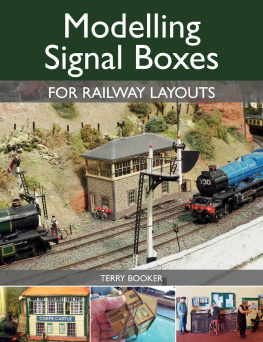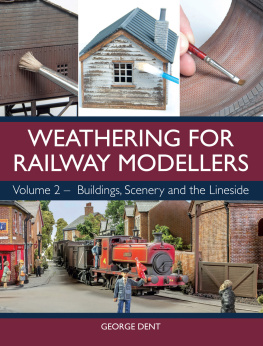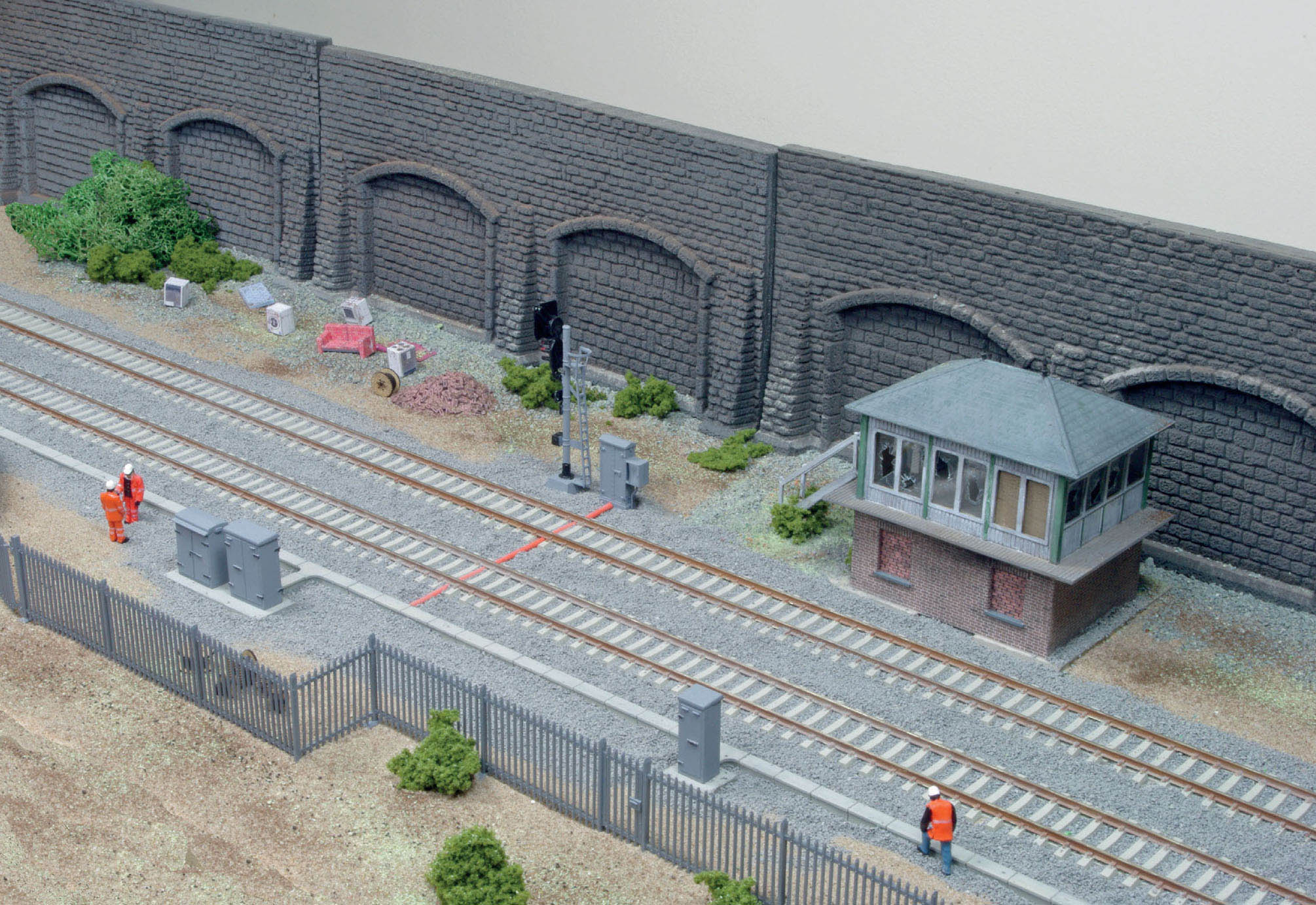
Modelling the Lineside
A GUIDE FOR RAILWAY MODELLERS
RICHARD BARDSLEY

THE CROWOOD PRESS
First published in 2016 by
The Crowood Press Ltd
Ramsbury, Marlborough
Wiltshire SN8 2HR
www.crowood.com
This e-book first published in 2016
Richard Bardsley 2016
All rights reserved. No part of this publication may be reproduced or transmitted in any form or by any means, electronic or mechanical, including photocopy, recording, or any information storage and retrieval system, without permission in writing from the publishers.
British Library Cataloguing-in-Publication Data
A catalogue record for this book is available from the British Library.
ISBN 978 1 78500 140 6
Disclaimer
The author and the publisher do not accept any responsibility in any manner whatsoever for any error or omission, or any loss, damage, injury, adverse outcome, or liability of any kind incurred as a result of the use of any of the information contained in this book, or reliance upon it.
CONTENTS
ACKNOWLEDGEMENTS
This book is dedicated to my mother Margaret Bardsley, who passed away while it was being written; she was proud of my first three books and would have loved this one just as much. I am extremely grateful to my wife Sharon Bardsley for her continued support while also looking after our little boy, Samuel. As with each book I have written, thanks go to my father Stuart Bardsley for his keen proofing skills, but, in addition, he has constructed many of the model kits shown in this book, as well as going out and about for prototype photographs. My train buddy Colin Whalley was as generous as ever in lending me various models to photograph. For permission to use their superb photos, I thank Steve Flint and Craig Tiley of Railway Modeller. For letting me photograph their Glazebrook layout, I once again thank my friends at the Warrington Model Railway Club.
INTRODUCTION
One of the joys of being a railway enthusiast is to be able to turn up at the side of a railway line and just watch the trains go by. The more important the line, such as a main line or major route, then the more trains you will see. Being lineside is great fun, whether you are a serious trainspotter, or just a casual enthusiast. Who would not want to recreate this spectacle in model form?
With your very own model railway layout you can go linesiding whenever you want. It is easy to think that a railway line is just track, but there is more to it than meets the eye. There may be signals and a signal box, the boundary fence, warning signs, a platelayers hut, a track gang any or all of these things may be visible in a short stretch of railway line. As modellers, we can incorporate these features to provide an authentic and detailed backdrop for the trains themselves.
Real trains rarely use a railway line with the high frequency that model ones do. So if you spend a little bit of time at a real lineside location, you will doubtless have time between the trains. You could read a good book, but, instead, use the time to study the place and all the little details that can be found there. It is surprising what you will start to notice once you pay attention to these details. Then you can think about incorporating these things into your model railway.
Many things like signals and level crossings can be found at stations, though they may also be found in the middle of nowhere at a point between two stations. So stations are a good place for research, taking away the station itself and using the remaining features to model a stretch of the line.
Signalling is one of the most common features to be found by the lineside, since signals are not just used to start and stop trains at stations. The block working system means that signals (and signal boxes) could be found in what are often quite isolated places. Junctions are not necessarily found at stations, therefore the signals for these locations can be seen where you might not expect to find them.
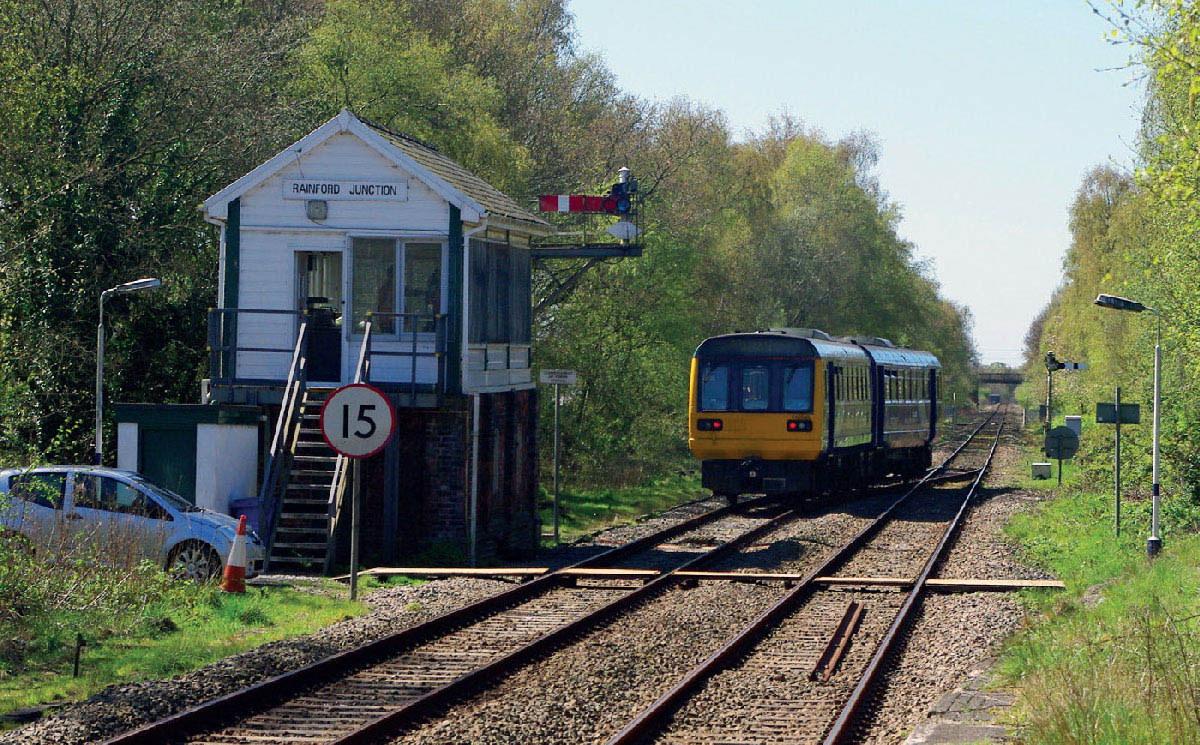
While todays Rainford Junction is but a shadow of its former self, this view shows a wealth of detail that can be included in a lineside scene. Besides the obvious features such as the signal box and the signals themselves, there are many important details. These include the signs (both speed signs and warning signs for personnel), the unguarded barrow crossing for the signalman, streetlamps for night-time, a traffic cone and even a short length of discarded rail.
There are many reasons to cross the railway line, so bridges, level crossings and underpasses can be found all along the lineside. Conversely, there are many places where the railway company does not want people to cross the line; to prevent trespass there are all sorts of styles of boundary fencing and walling.
Dotted along the lineside there were, and in some cases still are, various buildings in support of the operation of the railway. Most obviously there are signal boxes and equally common were the platelayers huts. Sometimes a level crossing in an isolated place would have had a crossing keepers cottage.
Some of the details are smaller, such as gradient signs, mileposts and speed signs. Ballast bins can be seen by platelayers huts, or just on their own along the lineside. Sadly, many places attract rubbish, from small items to big ones; it is a small detail, but if you really want to be authentic about modelling a time and a place then you need to include it.
Railway lines consist of track and like the rolling stock that uses it, track needs regular maintenance and eventually renewal. An interesting cameo scene can be created at the lineside by modelling the men, materials and equipment that are needed to keep the track well maintained and safe.
While railways have always run on track, the lineside details can set the period and scene instantly. There is a broad distinction between the steam period and the modernization era. The former would have been characterized by such things as telegraph poles, platelayers huts (and platelayers) and semaphore signals. The modern railway era is one of concrete trunking, mobile track gangs in vans and colour light signals.
Some things do timelessly cross these two broad eras. There are still some signal boxes and semaphore signals in use today, though this small minority is declining quickly. While modernity is not to be found in a period setting, the old can often be discovered alongside the new. It may be out of use, but often it is still there, for example as a boarded-up signal box or a ruined platelayers hut.
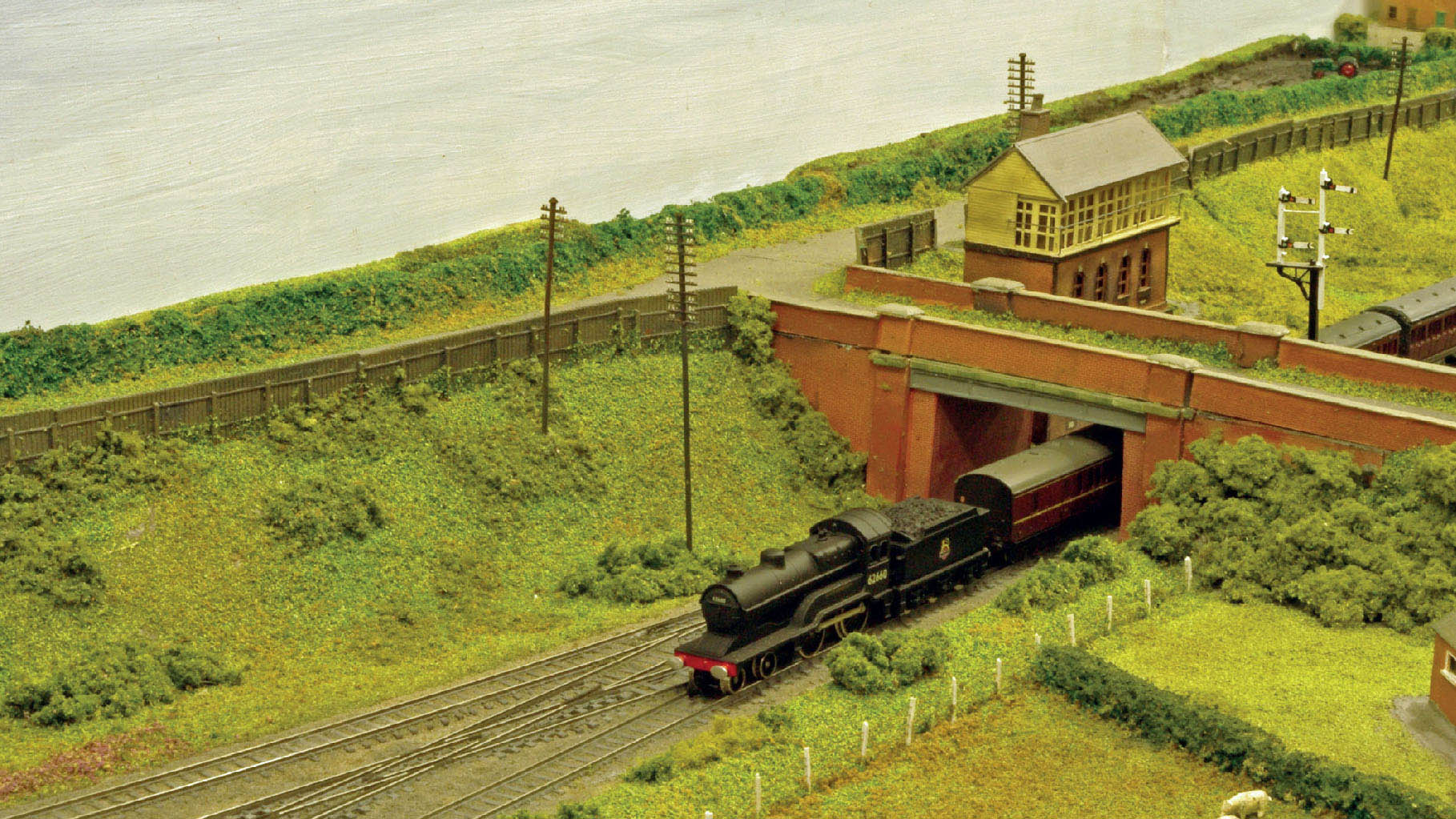
A seemingly ordinary lineside scene can actually contain a lot of detail, as this view of the Warrington Model Railway Clubs N-gauge layout Glazebrook demonstrates. In the foreground, there is wire-in-post fencing, while at the top of the embankment is a tall vertical planked fence. There is an elevated signal box (giving clearance to see over the bridge), as well as signals to control the junction that begins bottom left. Finally, aside from the locomotive, the steam era is much in evidence by virtue of the telegraph poles.
Fortunately for railway modellers, much of the detail that brings a lineside scene to life is readily available from the model railway manufacturers. Some of it is available ready to plant; all you have to do is take it out of the box and install it on your layout. Other items are available as good-quality kits, so if you enjoy making things there is the added bonus of putting them together. In some cases, what you need may not be available ready-made or as a kit, but scratch-building is not as difficult as it may seem.
Next page

